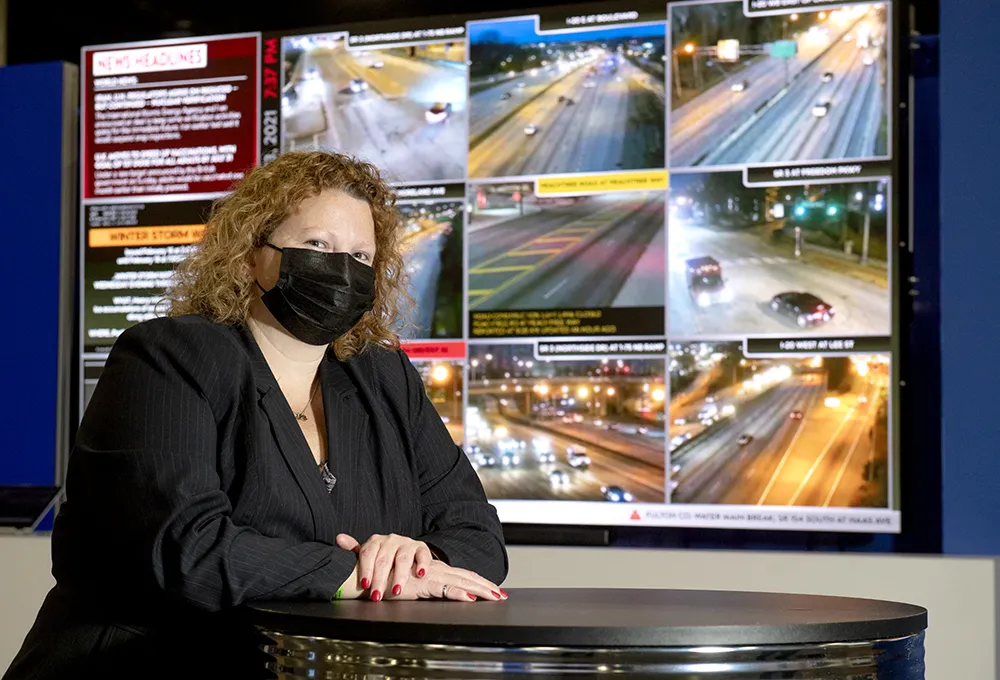There are huge benefits from roadway signage becoming dynamic, as Jason Morrison, ITS Market Manager at Daktronics explains.
April 22, 2013
Read time: 4 mins

There are huge benefits from roadway signage becoming dynamic, as Jason Morrison, ITS Market Manager at 32 Daktronics explains.
Q Digital roadway signage has seen important changes recently. Before discussing those in detail, could you explain how digital messaging has developed over the last 10 years?A Over the past 10 years Dynamic Message Signs (DMS) have advanced significantly, not just in their capabilities, but also in how they are being used. DMS have evolved from character and line based, to full matrix, to integrating colour, to today’s higher resolution full colour signs. With each advancement more flexibility for content and subsequently improved communication was realised.
In the past, agencies were limited to delivering valuable information via text based messages. This presented a challenge in delivering a concise, meaningful message that can be easily understood in a short window of viewing time. Text-only messages are effective, but studies have shown that there are better ways and through technological advancements and guidance from national standards organisations, these improved means are achievable and accepted.
Q Daktronics is a founding member of the Dynamic Message Sign Working Group of the National Transportation Communications for ITS Protocol which was set up in 1998. So are you helping to define standard?
A Yes, Daktronics continues to be an active member of the NTCIP working group. Through the collaboration of industry manufactures and stakeholders, we were able to develop a standard protocol for communicating to dynamic message signs. This is important because it ensures the compatibility and interoperability of DMS equipment and control systems, regardless of manufacturer.
With an eye to the future, the latest edition of NTCIP 1203 includes standard definitions for using graphics and colours on DMS. Additionally, NTCIP now contains requirements for displaying content on full-matrix displays, including message tags which provide the ability to show text alongside graphics.
Q The latest generation of DMS uses graphics. Is such capability merely desirable if budgets allow or would you put it more strongly than that?
A The goals of agencies are not to install signs, cameras, sensors, etc., but to improve safety, relieve congestion, increase capacity, and effectively communicate to the traveller/commuter. As the most visible component of ITS systems and the conduit for which information is disseminated, the latest generation of graphics capable DMS are imperative.
The University of Rhode Island found that when text in a DMS is supported with a graphic, motorists are able to comprehend and react 35% more quickly. Higher resolution full colour DMS provide the benefit of communicating more information in less time than traditional text-only DMS. MUTCD encourages the use of colour signs to accurately mimic universally understood symbols/graphics. Drivers have a limited viewing time and this practice is more effective in the delivery of a clearer, more concise message. This aids in safety by minimising the time to comprehend messages and keeping travellers’ eyes on the road and minimising distractions.
Q You’ve just illustrated that the latest integrated DMS enables agencies to do a lot more; provide substantial additional value to travelers. Presumably this would impact return on investment?
A An important point to consider is that most agencies operate on a 15 year lifecycle. From an initial investment the acquisition costs associated with implementing these more capable DMS in relation to aggregate site costs is marginal. Without question the return is going to be realised on multiple levels. Agencies use of symbols and graphics will improve the effectiveness in managing and directing traffic, which in return will assist in mitigating congestion. With the decrease in congestion and enhanced communication, agencies will achieve a reduction in first and secondary collisions, consequently improving safety.
Q Looking to the future, what new developments do you see on the horizon?
A Keeping the USDOT’s mission of ensuring a fast, safe, efficient, accessible and convenient transportation system in mind I see the ITS market continuing to play a more significant role in meeting these objectives. Through more effective communication travellers are able to make informed decisions.
Presently we are seeing agencies across the country benefitting from utilising symbols and graphics to improve the effectiveness of their messages.
Additionally, agencies are capitalising on finding broader applications and new ways to deploy DMS. With the versatility of higher resolution full color DMS the benefits of applications such as lane management, queue warning, temporary shoulder use, travel times, and speed harmonisation to name a few are being realised.
Booth 507
%$Linker:










